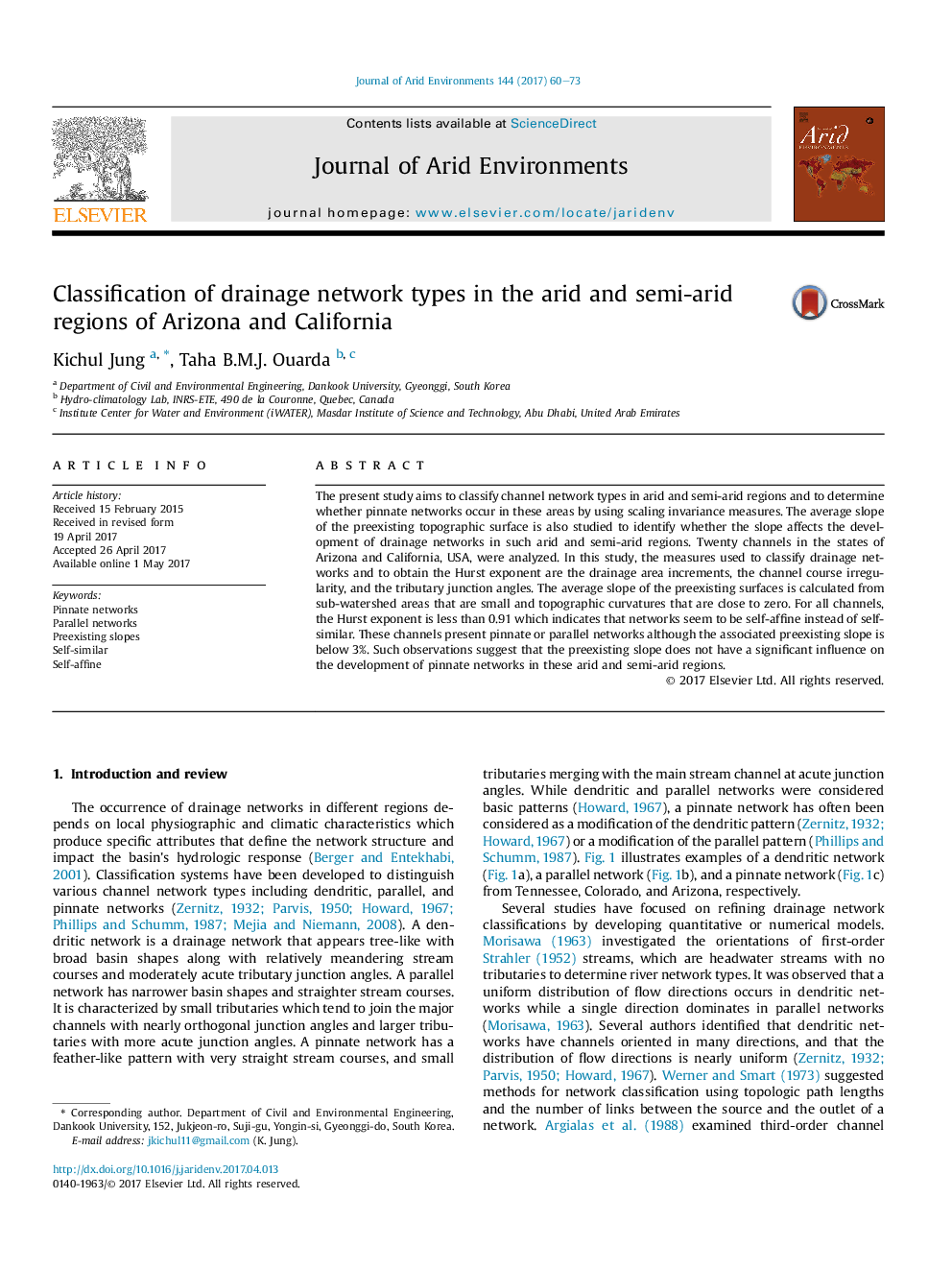| Article ID | Journal | Published Year | Pages | File Type |
|---|---|---|---|---|
| 5744367 | Journal of Arid Environments | 2017 | 14 Pages |
â¢Drainage networks in arid and semi-arid regions are examined for their network types.â¢Pinnate networks occur in arid and semi-arid areas with low preexisting slopes.â¢Pinnate networks are observed in the USA.
The present study aims to classify channel network types in arid and semi-arid regions and to determine whether pinnate networks occur in these areas by using scaling invariance measures. The average slope of the preexisting topographic surface is also studied to identify whether the slope affects the development of drainage networks in such arid and semi-arid regions. Twenty channels in the states of Arizona and California, USA, were analyzed. In this study, the measures used to classify drainage networks and to obtain the Hurst exponent are the drainage area increments, the channel course irregularity, and the tributary junction angles. The average slope of the preexisting surfaces is calculated from sub-watershed areas that are small and topographic curvatures that are close to zero. For all channels, the Hurst exponent is less than 0.91 which indicates that networks seem to be self-affine instead of self-similar. These channels present pinnate or parallel networks although the associated preexisting slope is below 3%. Such observations suggest that the preexisting slope does not have a significant influence on the development of pinnate networks in these arid and semi-arid regions.
